

新闻
2019-01-21
成都博物馆2019春节大展预告 - 与时代同行 - 四川油画邀请展
视频拍摄制作均由ActionMedia团队制作完成
15位参展艺术家,他们大多来自1977、1978级,既是四川当代油画的奠基者,也是改革开放的参与者、见证者,他们可以被看作是“改革开放的一代”。
从“伤痕美术”——“乡土绘画”——“生命流”表现主义——“西南经验”——“传统再造“,跨度40年,集中呈现四川油画重要的发展轨迹。
《春风已经苏醒》《为什么》《1968某月某日·雪》《华工船》《雨过天晴》《山村小店》等数十幅经典作品,38年之后,重回成都,集中展现改革开放时期,四川油画对历史、对现实的思考,以及如何构筑了四川油画当代的人文传统。
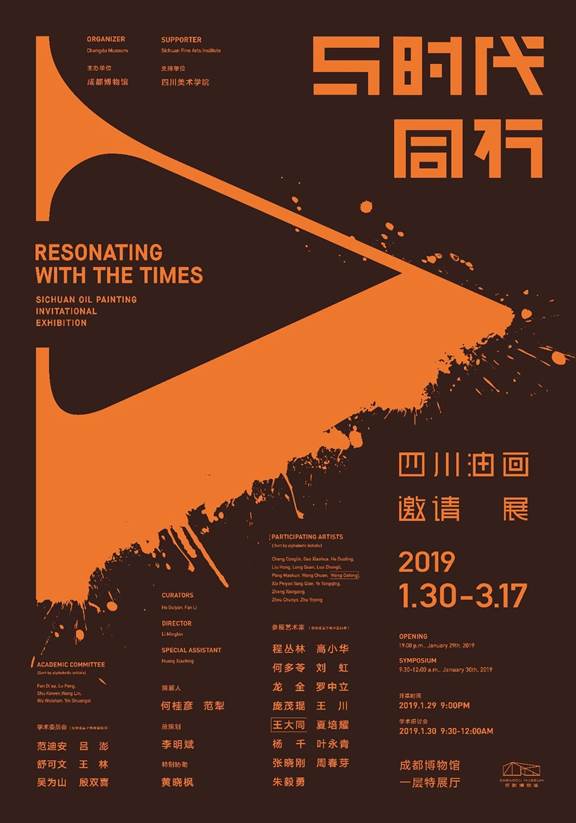
与时代同行——四川油画邀请展
策展人
何桂彦 范犁
总策划
李明斌
特别协助
黄晓枫
学术委员会
(按姓名首字母拼音排序)
范迪安 / 吕澎 / 舒可文 / 王林 / 吴为山 / 殷双喜
参展艺术家
(按姓名首字母拼音排序)
程丛林 / 高小华 / 何多苓 / 刘虹 / 龙全
罗中立 / 庞茂琨 / 王川 / 王大同 / 夏培耀 / 杨千
叶永青 / 张晓刚 / 周春芽 / 朱毅勇
支持单位
四川美术学院
主办单位
成都博物馆
展览时间
2019年1月30日—2019年3月17日
开幕时间
2019年1月29日晚上7点
学术研讨会
2019年1月30日上午9:30点-12点
展览地点
成都博物馆一层特展厅

改革开放之初,四川的艺术家关注现实,把握历史与时代的发展潮流,强调人文关怀,用作品去言说、表现时代所凝聚的文化精神。1979-1984年之间,以《为什么》(高小华)、《一九七八年×月×日·雪》(程丛林)、《父亲》(罗中立)、《春风已经苏醒》(何多苓)等为代表的“四川画派”作品,呈现出反思与批判的融会、文化记忆与生命拷问的交织,是四川油画的第一个发展高峰,也成为在中国美术史上具有里程碑意义的油画佳作。由“知青题材”嬗变而来的“乡土绘画”,用对真、善、美的农村生活的歌颂代替了“伤痕美术”中“忧伤”和“伤感的人道主义”,并在其后延伸出两条不同的油画发展路径。回望历史,不仅让我们领略到四川油画在1980年代的艺术追求,而且也能感受到其内在的精神与人文力量,以及它们如何构筑了四川当代油画的人文传统。
With the start of Opening-up and Reforms, Sichuan artists placed emphasis on reality, mastering historical and present development. They emphasized the humanities, expressing their zeitgeist through art. Between 1979 and 1984, Gao Xiaohua’s Why?, Cheng Conglin’s Snow, Luo Zhongli’s Father, and He Duoling’s Spring’s Breeze Has Returned came to represent the Sichuan School. This school of art was reflective and critical, rich in cultural memory with its tortuous inquest into human existence. 1979 through 1984 saw the first peak of Sichuan School activity, setting a milestone in Chinese art history. Paintings arising from “educated youth” sent down to the countryside transmuted into Native Soil painting. In the Native Soil movement, eulogizing of rural life as “true, good and beautiful” replaced the grief and pathos of Scar Art, setting two different trajectories in oil painting. We are drawn back in history, to artistic pursuits of 1980’s Sichuan oil painters; drawn to their inner spirit of strong humanism.
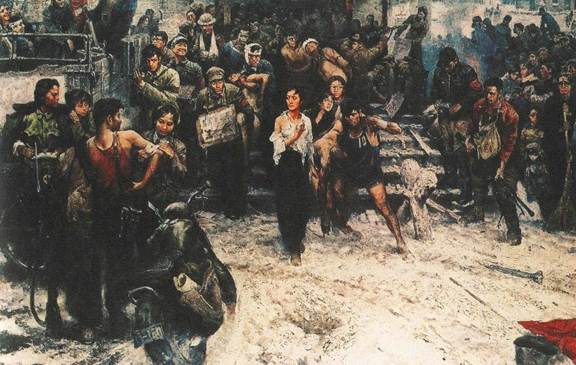
▲ 程丛林 《1968年某月某日·雪》 布面油画 200×300cm 1979
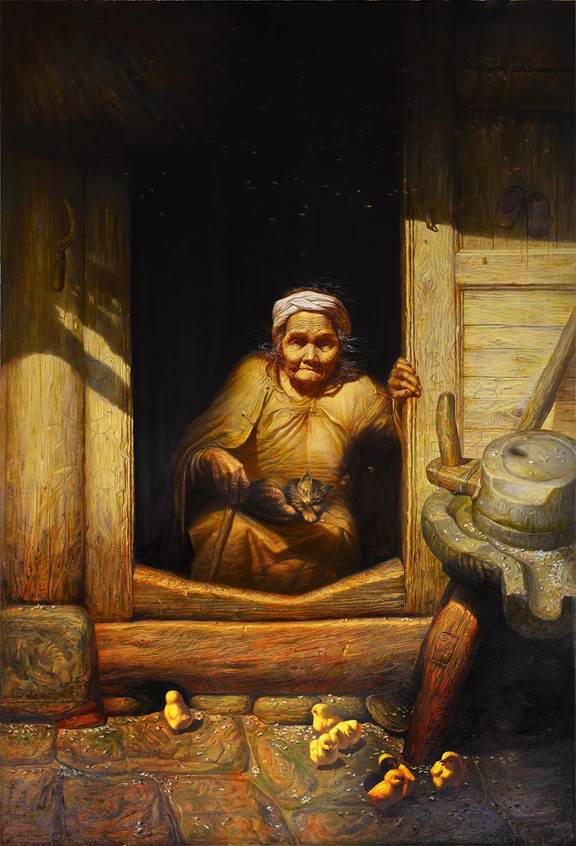
▲ 罗中立 《岁月》 布面油画 205x140cm 1988
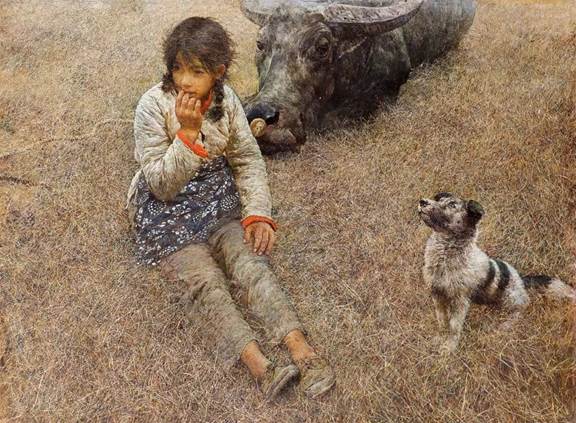
▲ 何多苓 《春风已经苏醒》 布面油画 96x130cm 1981

在四川当代绘画中,涌现出许多围绕“人道”、“人文”、“人性”等话题展开的人物作品。1980年代,艺术家侧重描绘自身生活周遭的人物,借助这些具有典型时代特征的人物形象,反思在一个大时代、一个特定的历史洪流中,个人或者一个群体的命运。这些创作实践,不仅推动四川油画从“知青题材”向“乡土绘画”的过渡,也实现了“伤痕美术”批判现实主义向乡土现实主义的转变。1990年代,四川油画对“人”的表现迎来了第二个高峰。在本次参展的作品中,张晓刚的《大家庭》最具代表性。从内省转向批判,从私密的个人性转向公共性,实现了对学院主义和1980年代的现代主义诉求的双重超越。四川艺术家以“时代肖像”为核心的作品,有着丰富的人物形象与文化主体性,折射出时代的变化,是“人”的肖像,也是精神的肖像。
Many artworks in contemporary Sichuan painting have to do with “humanism,” “humanities,” and “human nature.” In the 1980’s, painters borrowed from life and people around them, rendering these as key images of that era. These artworks were a reflection of their era, a specific course in the river of history carrying both individual and collective destinies along with it. These artworks not only passed from “educated youth” themes to “Native Soil” ones, they also served to transition from critical realism to Native Soil realism. 1990’s Sichuan oil painting focused once again upon “humanity.” Of artworks in this exhibition, Zhang Xiaogang’s Everyone’s Home most represents this. From inner reflection to criticality, from private and individual to public; this artwork shows us how realism can surpass both Academism and 1980’s realism. Sichuan artists present us primarily with a “spirit of the era,’ both figuratively and culturally. These artworks show us how times have changed; serving as both “human” and spiritual portraits.
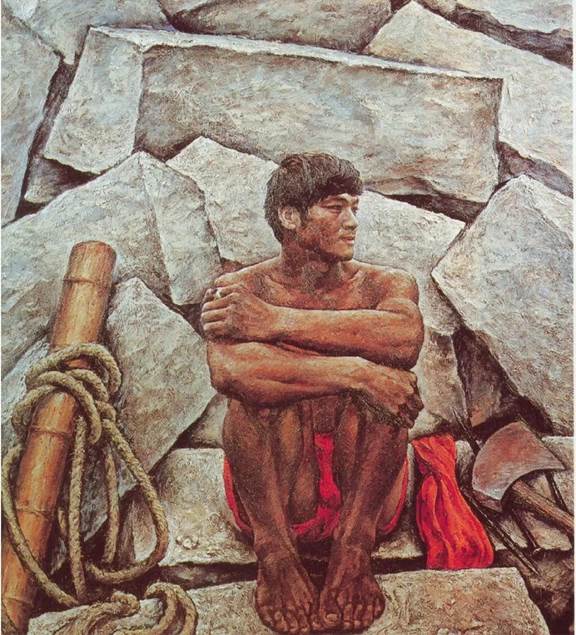
▲ 龙全 《基石》 布面油画 124cm×137cm 1984
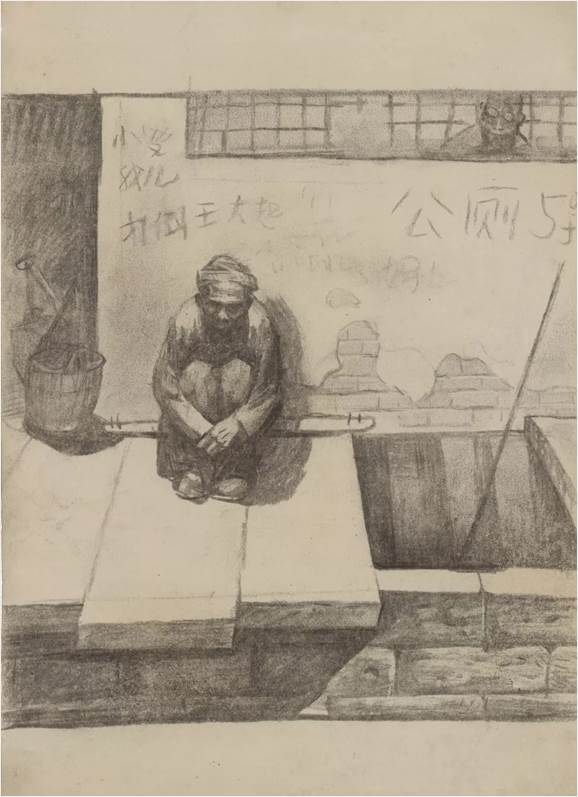
▲ 罗中立 《父亲》 手稿(组)“守粪的农民” 素描 22.5×32cm 1979
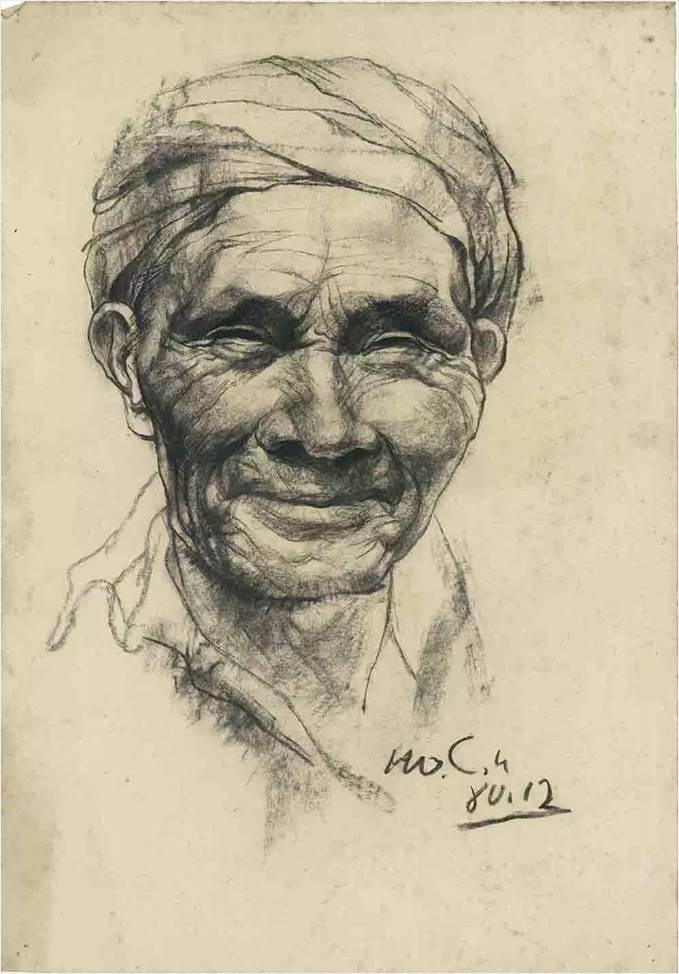
▲ 罗中立 《父亲》系列手稿 素描 27.5×39cm 1980
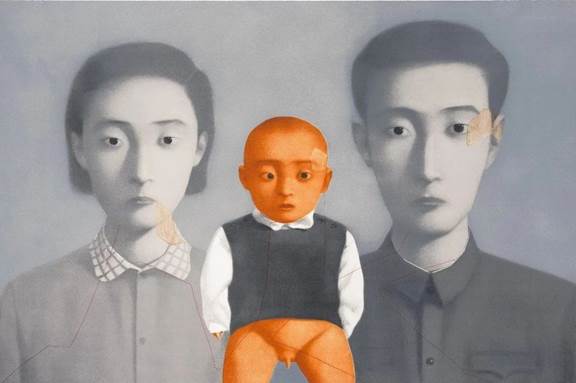
▲ 张晓刚 《大家庭2007》 丝网版画 70 x 98cm 2007

四川当代油画家不同的语言诉求与风格实践呈现出阶段性的特征。1980年代初,为了解决语言的当代性问题,何多苓向美国的怀斯学习;罗中立迷恋克洛斯的超级写实;程丛林以苏里科夫作为榜样。“新潮美术”时期,张晓刚从喜欢梵高转向了形而上画派的籍里柯,以及超现实主义;叶永青喜欢卢梭与梦幻现实主义;周春芽则痴迷德国20世纪初的表现主义,这一时期是一个重要的转折点,也是四川当代绘画转向现代主义的黄金时期。 1993年前后,紧随着现代性、前卫性实践,张晓刚、叶永青、周春芽、罗中立等明确将绘画语言的当代性与本土化作为首要解决的问题,反思“新潮美术”时期向西方学习的经历与过程,从而完成了对语言所负载的文化身份的思考。
There are different phases to the linguistic claims and stylistic praxis of Sichuan contemporary oil painters. In early 1980s, to set up the modern language of paintings, He Duoling has transitioned toward the American painter Andrew Wyeth. Luo Zhongli is all about Chuck Close’s super-realism; and Cheng Conglin holds onto Ivanovich Surikov as an idol. In “New Wave” art era, Zhang Xiaogang turned from loving Vincent Van Gogh to adoring surrealism and the metaphysical work of Theodore Gericault. Ye Yongqing adores Henri Rousseau and fantasy realism. Zhou Chunya is obsessed with early 20th century expressionism.“New Wave” art resulted from Chinese artists being exposed to the West. Around 1993, we saw modernity and avant-garde experimentalism in Zhang Xiaogang, Ye Yongqing, Zhou Chunya, and Luo Zhongli; as each took on modern and nativist visual painting language. After taking on the heavy burden of clarifying painting language in terms of cultural identity, this language was then fully formed and ready to enter global art discourse.
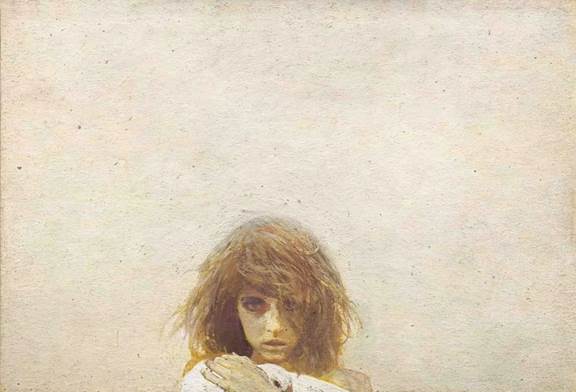
▲ 何多苓 《雪雁组画》 纸本丙烯 15.5×23cm 1983
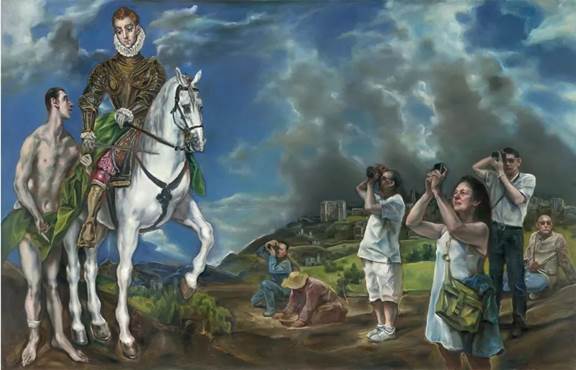
▲ 庞茂琨 《朵莱多游记》 布面油画 180×280cm 2017
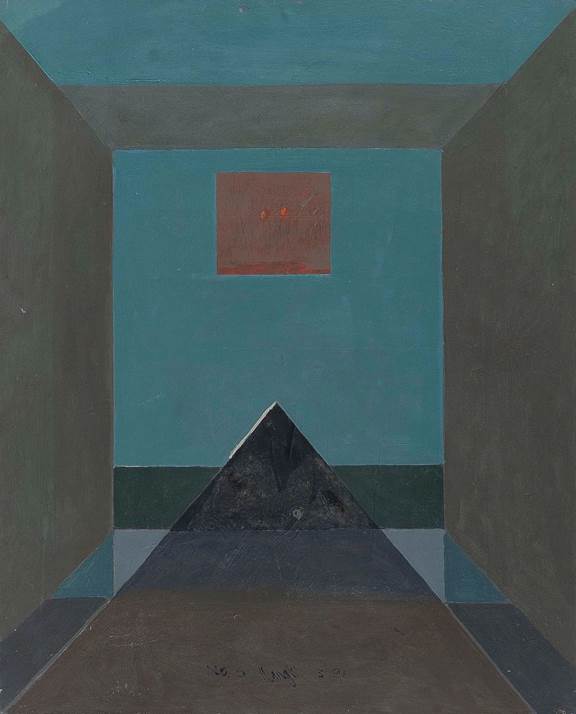
▲ 王川 《No.6-1992》 布面油画 100×80cm 1992

▲ 张晓刚 《说书人的魔法之十二》 石版画 80×120cm 2008

在过去四十年的发展中,中心与边缘,地缘与身份始终是当代艺术无法回避的问题,在四川当代油画,以及四川当代艺术家身上体现得同样突出。1980年代中期将“知青题材”推进到少数民族题材的创作,就是不断挖掘作品背后积淀的地域生存体验与文化经验;而“新潮美术”时期,以张晓刚、叶永青等人的创作,开始将四川、云南的地域经验提升为一种“西南经验”。纯正的地方文化与宽广的少数民族地区,为四川的油画创作与教学提供了具有独特精神与文化气质的艺术生长地,也在四川油画传统的形成过程中,烙下了鲜明的地域与身份印记。1993年前后,以“中国经验”展为契机,西南地域文化经验开始在全球化的背景下被赋予了新的意义。
In the past 40 years of center and peripheral development, we have seen geography and identity serve as points of consideration. Sichuan contemporary artists were exceptional in that they developed beyond “educated youth” rural life as subject matter to studying ethnic peoples at the margins of Han culture. This added to the regional nature of Sichuan existential and cultural experience. “New Wave” art found Zhang Xiaogang, Ye Yongqing and others beginning to seriously study Sichuan and Yunnan regions—forming what can be called a “Southwest experience.” Purely local experience and vast ethnic regions served as training grounds for Sichuan Fine Arts Institute teachers and students to develop within, both culturally and spiritually. As the Sichuan oil painting tradition developed, it branded itself with regional identity. The “China experience” around 1993 was a platform for Southwest regional cultural experience to re-contextualize globally.
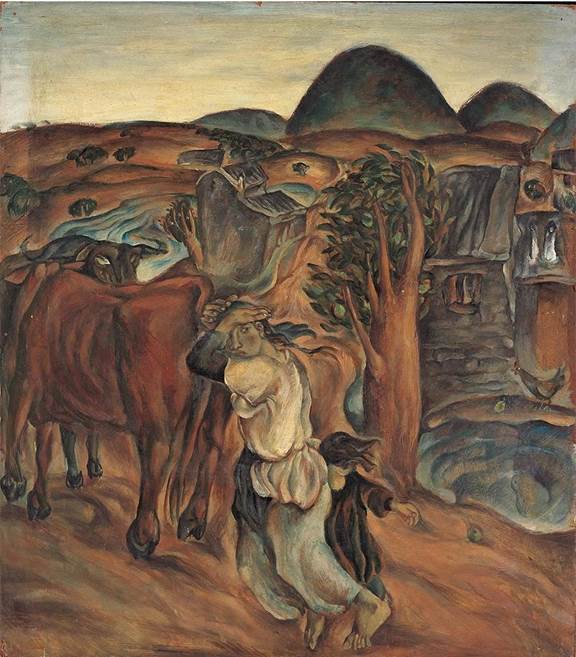
▲ 叶永青 《阵风》 布面油画 110x82cm 1983
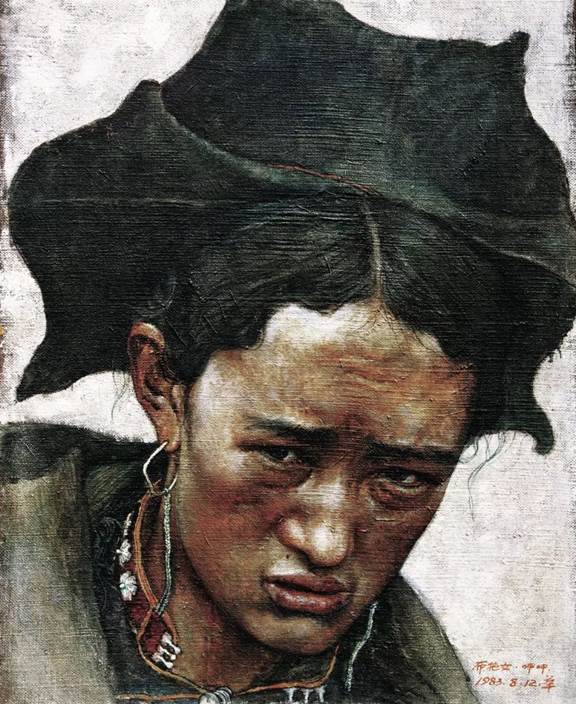
▲ 高小华 《布拖 人—布拖女》 板面油画 100×80cm 1983

“传统的再造”是四川当代油画重要的艺术现象。周春芽以《太湖石》系列和以《豫园》系列为代表的两次“回归传统”的经历;叶永青不限囿于语言,而是希望将传统的人文精神与创作态度与当下的生活进行融汇;罗中立从作品的语言、图式、修辞方法入手与传统的对话,在发现、阐释传统中赋予作品个人化的语言逻辑;何多苓将率性而为的笔触与表现性结合,王川将书写性作为与传统联系的重要通道,都成为四川艺术家“回归传统”的重要艺术实践。实际上,在四川年轻一代的艺术家如屠宏涛、漆澜、何森、曹静平、杨劲松等人的作品中,同样可以看到传统正源源不断的为他们提供滋养。四川当代绘画中传统的绵延与衍生,清晰地展现了艺术家如何立足当下的文化立场,完成传统的再造,使其在当代语境下生成新的意义。
Sichuan contemporary oil painting engages in reconstructing tradition. Zhou Chunya’s “Lake Tai Stones” series and Yu Garden series represent “return to tradition.” Ye Yongqing breaks free from traditional visual language limitations. Luo Zhongli engages with tradition; discovering, and interpreting language, using a schematic and rhetorical methodology, with individual logic and visual style. He Duoling leads the charge with expressive perfection of poetic meaning and image. Wang Chuan renders an important passage in tradition. Together these artists “return to tradition” as artistic praxis. Actually, young artists like Tu Hongtao, Qi Lan, He Sen, Cao Jinping, and Yang Jingsong produce artworks that return to and nurture tradition. The extended continuity of “tradition” in Sichuan contemporary painting clearly shows the cultural stand these artists are taking. Reconstructing tradition is a process of generating new meaning in contemporary discourse.
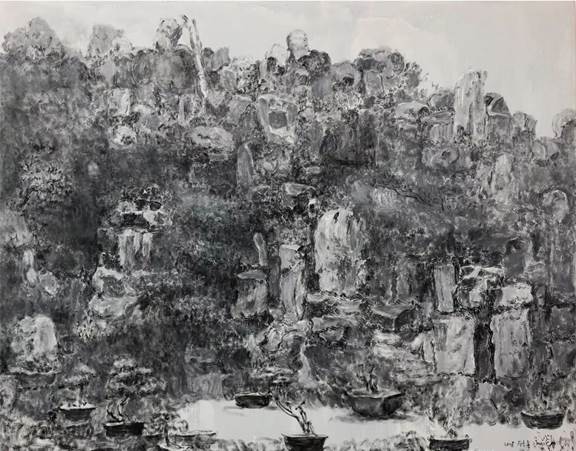
▲ 周春芽 《大假山》 布面油画 200x250cm 2018

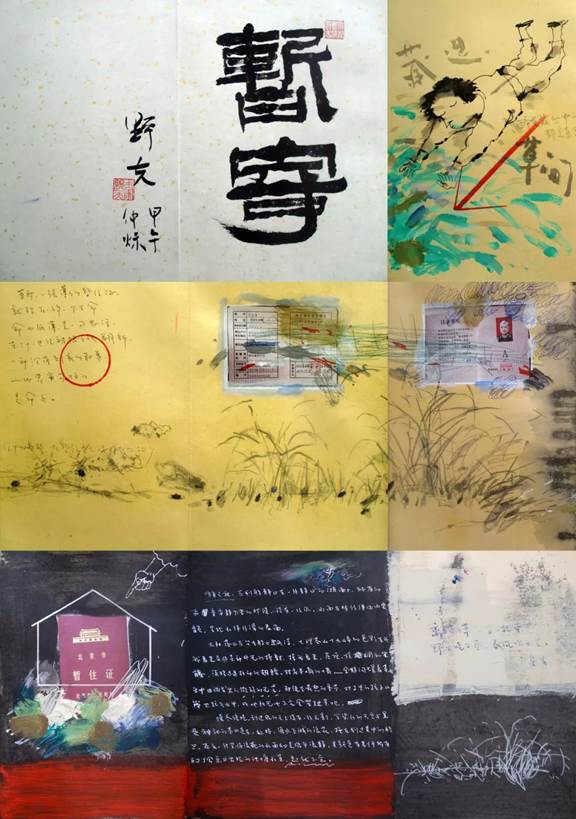
▲ 叶永青 《草叶集》(及局部) 宣纸综合材料 630x35cm 2014
